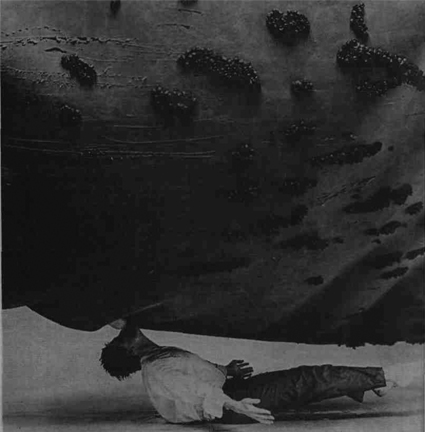Andrew Graham-Dixon on the odd universe of Boyd Webb
IN A BARE room a man stands precariously on a piano stool, which, tilted crazily at an angle of 45 degrees, is propped up on one leg by a.tiny, ludicrously frail twig. Attached to this twig by a string is a tortoise, whose progress across the room's scuffed linoleum floor is directed towards a small, open copy of the Bible. As if this were not a sufficiently awkward predicament, the man is buried up to his neck in the thick folds of a heavy green carpet — strung across the room on hidden supports, it forms a valley through which marches a procession of plastic dinosaurs.
Arms above his head, he strives to contain a rockfall of boulders, which, were he to relax his hold, would wreak havoc on this prehistoric phalanx (on closer inspection, these boulders turn out to be loaves of bread). The tension of the string, and the distance between tortoise and Bible, implies that when the creature reaches its apparent goal, this whole elaborate arrangement will collapse.
Boyd Webb is a New Zealand-born artist who has lived and worked in this country since 1972, when he arrived to study at the Royal College of Art. Tortoise is among 50 of his enigmatic mises en scène currently at the White-chapel Gallery — set up, at great trouble, in his East End studio, and preserved for posterity in large cibachrome photographs (each one a unique print), they hover between absurdity and high moral seriousness.
Webb insists that his works "are not made to look weird — I don't want people to think 'My God, how peculiar", I want them to think 'Yes, this is plausible, yes, this is probably true.' If they were just peculiar, weird, bizarre, they wouldn't...


